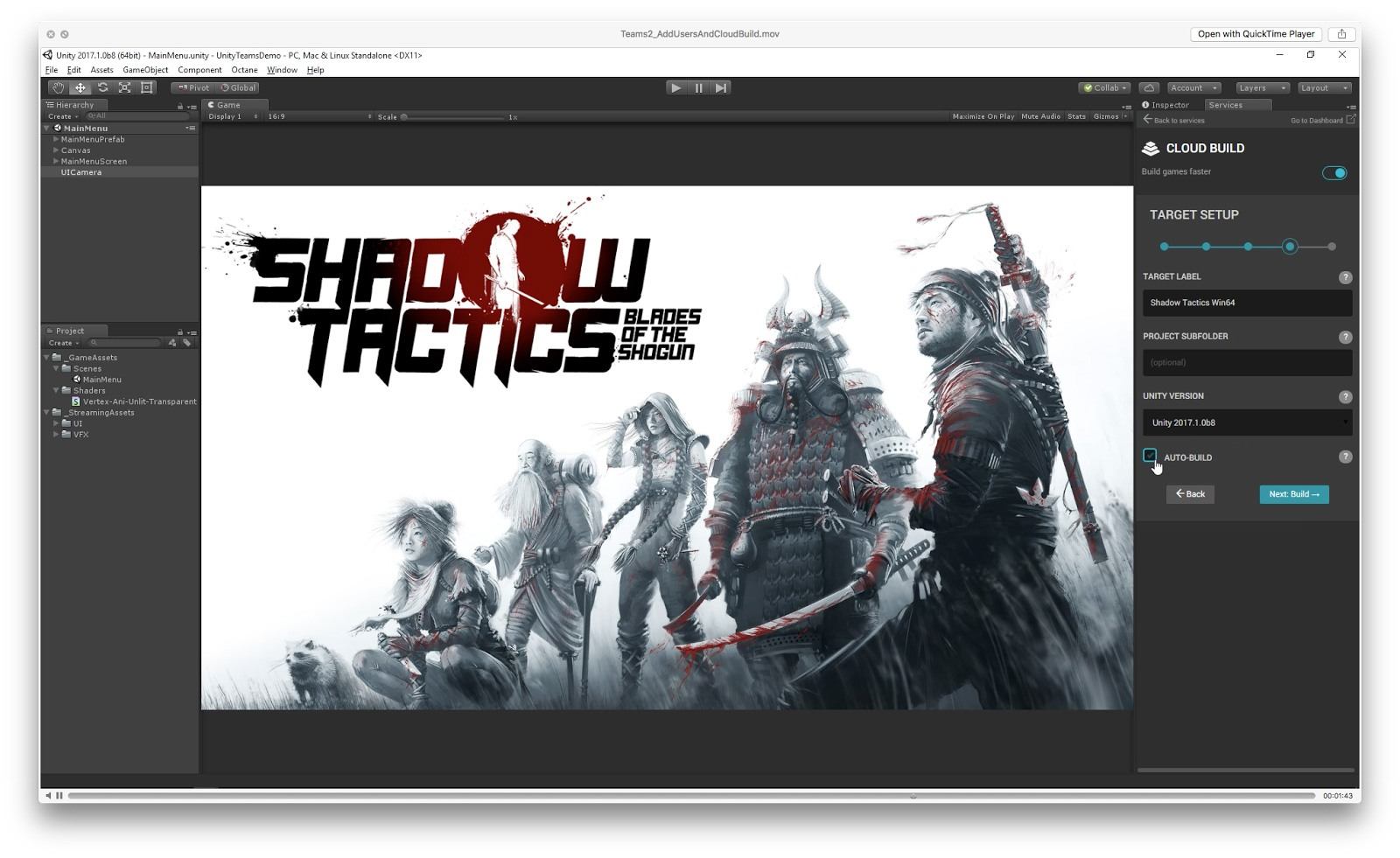
The biggest problem with testing on mobile is device fragmentation (especially on Android) and we can only test on a few of the most popular models.
Unity cloud build sloqw install#
The more projects we have in Unity Cloud Build, the more builds we have to install and run on devices. Since we want to be able to scale up to testing more projects, the limiting factor now is running the builds on devices. It can rebuild projects on any supported Unity version. Unity Cloud Build can also be configured to automatically poll a repository for changes and rebuild the projects automatically. If anything fails during importing or building we also get a notification and we can act on it immediately. As soon as the builds are ready we receive the notification e-mail, and testing can begin on all platforms. This saves us a tremendous amounts of time, since all it requires to make the build is a few clicks and all builds for all projects are done in parallel. Cloud Build seemed like a perfect fit for automating testing of these large projects.įast forward to the present day, and after we released Unity 5.1, and Cloud Build has been out there for a while, testing large projects goes through an entirely different process (described below with pictures for your viewing pleasure): While we were busy figuring that out, in another part of the company work was underway for the official release of what is now Unity Cloud Build. We quickly started discussing how we could automate some of this. This was usually done by one person and it could take a few days.
Unity cloud build sloqw for mac#

Unity cloud build sloqw full#
We were fortunate enough to have a few major studios share the full project folders for some of their completed games with us (for example, Republique) and we started manually importing and building these games on every new build during the beta and release candidate phases of development.

These projects don’t cover many of Unity’s features – any of which might break in a new version – and they are nowhere close to the size and complexity of some of the projects developed by our users. Our testers do a very good job at making sure that projects import, build and run properly in every new build on all our supported platforms, but since we are constrained by time we usually used small projects (like AngryBots or Nightmares) to run these tests. We were also hitting major bugs and regressions in graphics, physics and performance related areas. Often, when importing an older project in Unity 5, we had to fix scripts manually. For Unity 5 we wanted a cleaner API, which in some cases meant we had to break backwards compatibility.


Read on to learn how we used to deal with large project testing and which awesome new possibilities are available now!ĭuring development of the massive Unity 5 release, and the extensive changes it entailed, we frequently ran into issues with importing and building projects. This is a story about how we are using Unity Cloud Build internally and how it can make life easier for you, our users, as well.


 0 kommentar(er)
0 kommentar(er)
